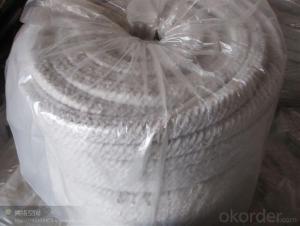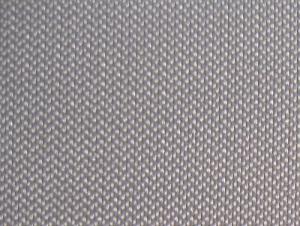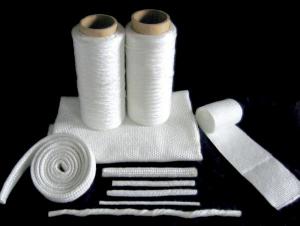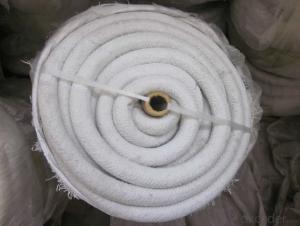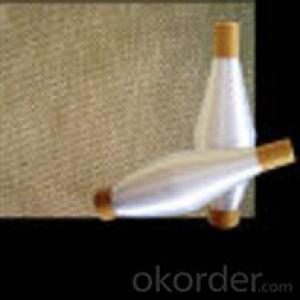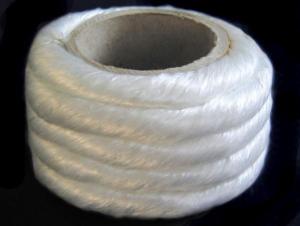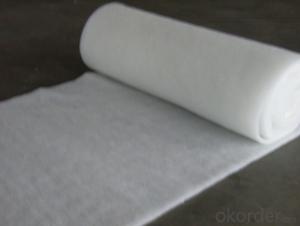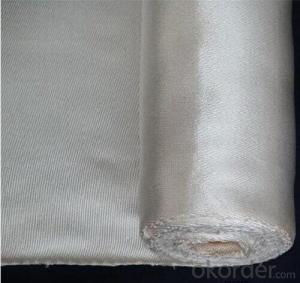Seal ceramic textile fiber rope
- Loading Port:
- Shanghai
- Payment Terms:
- TT OR LC
- Min Order Qty:
- 10 m.t.
- Supply Capability:
- 100 m.t./month
OKorder Service Pledge
OKorder Financial Service
You Might Also Like
Quick Details
| Type: | Twisted Rope | Application: | Heat Insulation | Thickness: | 4-60mm |
| Width: | 4-60mm | Length: | 30m | Grade: | HA (High Aluminum) |
| Chemical Composition: | AL2O3+SIO2 | Ultimate Strength (≥ MPa): | 0.04 | Working Temperature: | 1260 |
| Fiber Diameter: | 2-5um | Thermal Conductivity: | 0.075-0.175 w/m.k | Shrinkage (1800℉, 3h): | <=-3 |
| Place of Origin: | China (Mainland) | Brand Name: | Model Number: | ceramic textile fiber rope | |
| Color: | White | fire-resistant rope density: | 600-620kg/m3 | ceramic rope: | ceramic rope braided |
| fire resistant rope: | ceramic textile fiber rope |
Packaging & Delivery
| Packaging Detail: | ceramic textile fiber rope package: carton with inner plastic bag |
| Delivery Detail: | 15days after receiving advance payment |
Production description of ceramic textile fiber rope
Iterm | Ceramic fiber ceramic rope twisted |
Type | Ceramic fiber ceramic rope twisted |
Ceramic fiber ceramic rope twisted | |
Ceramic fiber ceramic rope twisted | |
Characteristics | ** Good thermal insulation |
** Excellent high temperature strength | |
** Good electrical insulation properties | |
** High chemical stability | |
** Low thermal conductivity | |
Typical Use | Hightemperature pipe insulation and seal,cable insulation coating, flexible expansion joint connection,coke oven opening seal |
MOQ | 30m |
FOB Price | 4-6.5 USD/KG |
Port | Qingdao |
Payment Terms | L/C, D/A, D/P, T/T |
Packing | Carton with inner plastic bags |
Delivery | Within 15 days after delivery deposit |
Certificate | ISO9001, MSDS |
Product details of ceramic textile fiber rope
Type | Ref.No. | Reinforcement | Work. Temp (°C) | Density (kg/m3) | Size (mm) |
Twisted Rope | C101TG | Glass filament | 1260 | 600-620 | 6-40 |
C101TS | Stainless steel wire | 1260 | 600-620 | 6-40 | |
Round Braided Rope | C101TG | Glass filament | 1260 | 600-620 | 6-160 |
C101TS | Stainless steel wire | 1260 | 600-620 | 6-160 |
- Q:Can glass fiber textiles be used in the construction industry?
- Yes, glass fiber textiles can be used in the construction industry. Glass fiber textiles are lightweight, flexible, and have high tensile strength, making them suitable for reinforcing materials in concrete, walls, and roofs. They can also be used for thermal insulation, soundproofing, and fireproofing applications in buildings.
- Q:What are the different surface treatments available for glass fiber textile?
- There are several surface treatments available for glass fiber textiles, including sizing, coating, and laminating. Sizing involves applying a protective layer to the surface of the fibers to improve their handling and processing characteristics. Coating is the application of a layer of material on the surface to enhance properties such as abrasion resistance, water repellency, or flame retardancy. Laminating is the process of bonding multiple layers of textiles or other materials together to create a composite structure with improved strength and durability. These surface treatments can be tailored to meet specific requirements and applications of glass fiber textiles.
- Q:Can glass fiber textiles be used in insulation boards?
- Yes, glass fiber textiles can be used in insulation boards. Glass fiber textiles are often used as a reinforcement material in insulation boards due to their excellent thermal and acoustic insulation properties. The glass fibers provide strength and stability to the boards, making them more durable and resistant to damage. Additionally, glass fiber textiles have low thermal conductivity, meaning they can effectively reduce heat transfer and improve energy efficiency. Overall, glass fiber textiles are a common choice for insulation board manufacturing, providing effective insulation and enhanced performance.
- Q:Can glass fiber textile be used in footwear?
- Yes, glass fiber textile can be used in footwear. It is a durable and lightweight material that can provide strength and stability to the structure of the footwear. Additionally, glass fiber textile can enhance the overall performance and support of the footwear, making it suitable for various sports and outdoor activities.
- Q:Can glass fiber textile be used in insulation blankets?
- Indeed, insulation blankets can utilize glass fiber textile. These textiles, widely employed in insulation materials, offer remarkable attributes such as elevated thermal resistance, exceptional fire resistance, and low thermal conductivity. Their effectiveness lies in their ability to impede heat transfer, rendering them an ideal choice for insulation blankets. By capturing air pockets within their fibers, glass fiber textiles effectively reduce heat transfer through conduction and convection. Moreover, these textiles are lightweight, effortless to manipulate, and readily moldable into diverse shapes, including blankets, which accounts for their immense popularity in insulation applications.
- Q:How do glass fiber textiles affect manufacturing processes?
- Glass fiber textiles have a significant impact on manufacturing processes by enhancing the strength, durability, and thermal resistance of various products. These textiles are commonly used as reinforcements in composite materials, such as plastics and resins, resulting in stronger and lighter end products. Additionally, glass fiber textiles provide insulation properties, making them ideal for applications in the automotive, aerospace, and construction industries. Overall, their incorporation in manufacturing processes leads to improved product performance and increased efficiency.
- Q:Can glass fiber textile be used in satellite dishes?
- Yes, glass fiber textile can be used in satellite dishes. It is a commonly used material for manufacturing satellite dishes due to its high strength, durability, and ability to efficiently transmit and receive signals.
- Q:Can glass fiber textile be used in spacecraft construction?
- Glass fiber textiles, also known as fiberglass, are a suitable material for constructing spacecraft. They are lightweight and have high tensile strength, making them ideal for various applications in the aerospace industry. In spacecraft construction, they are commonly used as reinforcement material in composite structures. Using glass fiber textiles in spacecraft construction has several advantages. Firstly, they possess excellent mechanical properties, including a high strength-to-weight ratio and stiffness. These properties are crucial for maintaining structural integrity and reducing the overall weight of the spacecraft. This is particularly important in the aerospace industry, where minimizing weight is a top priority to maximize fuel efficiency. In addition, glass fiber textiles offer good thermal and electrical insulation properties. This makes them suitable for applications that require temperature control and electrical isolation. Such properties are essential in spacecraft construction, as space's extreme temperatures and harsh environments can pose significant challenges to a spacecraft's integrity and performance. Moreover, glass fiber textiles are resistant to corrosion. This is beneficial in space, where exposure to different elements and harsh conditions can degrade materials over time. Their corrosion resistance helps extend the lifespan of spacecraft components, reducing the need for frequent repairs or replacements. Overall, glass fiber textiles provide a reliable and cost-effective solution for constructing spacecraft. They possess the necessary strength, lightweight, thermal insulation, and corrosion resistance properties required for the demanding conditions of space exploration.
- Q:Are glass fiber textiles resistant to discoloration in contact with sweat?
- Yes, glass fiber textiles are generally resistant to discoloration when in contact with sweat. Glass fibers are made from molten glass that is spun into fine strands, resulting in a material that is highly durable and resistant to various external factors, including sweat. Unlike natural fibers such as cotton or wool, glass fibers do not absorb sweat, which reduces the likelihood of discoloration or staining. Additionally, glass fiber textiles are often treated with protective coatings that enhance their resistance to discoloration even further. However, it is important to note that the specific composition and quality of the glass fiber textile can influence its resistance to discoloration, and some low-quality or poorly treated products may still be susceptible to staining over time.
- Q:Are glass fiber textiles resistant to environmental degradation or weathering?
- Glass fiber textiles exhibit a high degree of resistance to environmental degradation and weathering. These textiles are crafted from molten glass that is then spun into thin strands, which are subsequently woven together to form a robust and enduring material. The remarkable resistance of glass fiber textiles to UV radiation, moisture, and chemicals makes them exceptionally suitable for outdoor applications. Unlike other fabric types, they remain unaffected by extended exposure to sunlight, rain, or extreme temperatures, which can lead to deterioration. Given their ability to withstand weathering, glass fiber textiles find widespread use in various industries, including construction, aerospace, automotive, and marine. They are commonly employed in the production of insulation, reinforcements, and composite materials, where their stability and longevity are of utmost importance. Moreover, glass fiber textiles also possess resistance to mold, mildew, and pests, further enhancing their durability and longevity. They maintain their physical properties over time, ensuring that they continue to deliver reliable performance even in harsh environmental conditions. In conclusion, glass fiber textiles are highly resistant to environmental degradation and weathering. Their exceptional durability, stability, and resistance to UV radiation and moisture make them the preferred choice for applications that demand long-lasting and reliable performance.
1. Manufacturer Overview |
|
|---|---|
| Location | |
| Year Established | |
| Annual Output Value | |
| Main Markets | |
| Company Certifications | |
2. Manufacturer Certificates |
|
|---|---|
| a) Certification Name | |
| Range | |
| Reference | |
| Validity Period | |
3. Manufacturer Capability |
|
|---|---|
| a)Trade Capacity | |
| Nearest Port | |
| Export Percentage | |
| No.of Employees in Trade Department | |
| Language Spoken: | |
| b)Factory Information | |
| Factory Size: | |
| No. of Production Lines | |
| Contract Manufacturing | |
| Product Price Range | |
Send your message to us
Seal ceramic textile fiber rope
- Loading Port:
- Shanghai
- Payment Terms:
- TT OR LC
- Min Order Qty:
- 10 m.t.
- Supply Capability:
- 100 m.t./month
OKorder Service Pledge
OKorder Financial Service
Similar products
New products
Hot products
Hot Searches
Related keywords
